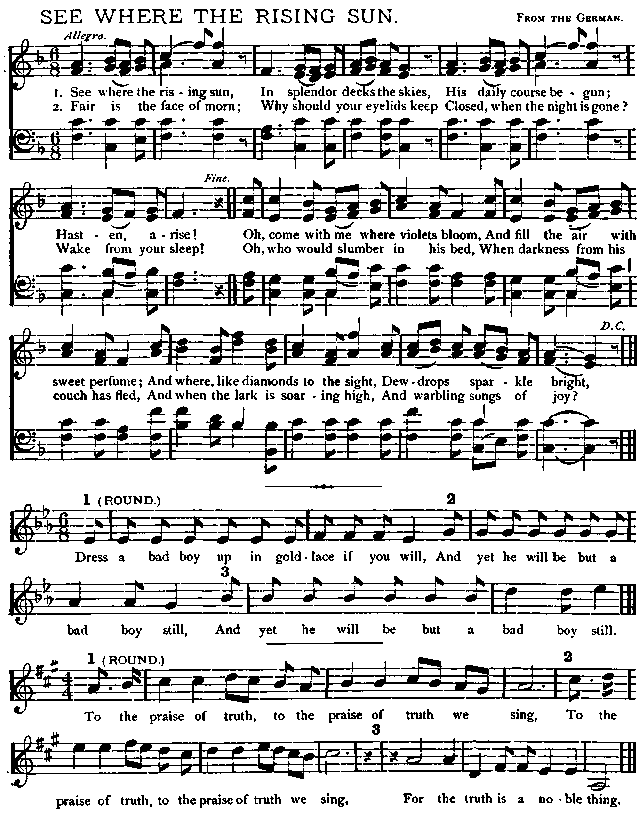Franklin Square Song Collection - online songbook
200 favorite songs and Hymns for Schools, Homes Lyrics & Sheet Music
| Share page | Visit Us On FB |
|
FRANKLIN-SQUARE SONG COLLECTION. |
*57 |
|||
|
I HAVE here a simple apparatus to show that rapid and regular shocks produce a natural musical note. This wheel is milled at the edge, and when I turn it rapidly so that it strikes against the edge of the card fixed behind it, the notches strike in rapid succession, and produce a musical sound. We can also prove by this experiment that the quicker the blows are, the higher the note will be. I pull the string gently at first, and then more quickly, and you will notice that the note grows sharper and sharper till the movement begins to slacken, when the note goes down again. This is because the more rapidly the air is hit, the shorter are the waves it makes, and short waves give a high note. Let us examine this with two tuning forks. I strike |
one, and it sounds C, the third space in the treble; I strike the other, and it sounds A, the first leger line, five notes above C. I have drawn on this diagram an imaginary picture of these two sets of waves. You see that the A fork makes three waves, while the C fork makes only two. Why is this? Because the prong of the A fork moves three times backwards and forwards while the prong of the C fork moves only twice; therefore the A fork does not crowd so many atoms together before it draws back, and the waves are shorter. These two notes, C and A, are three-fourths of an octave apart; if we had two forks, one going twice as fast as the other, making four waves while the other made two, then that note would be an octave higher.—Buckley. |
|||
 |
||||